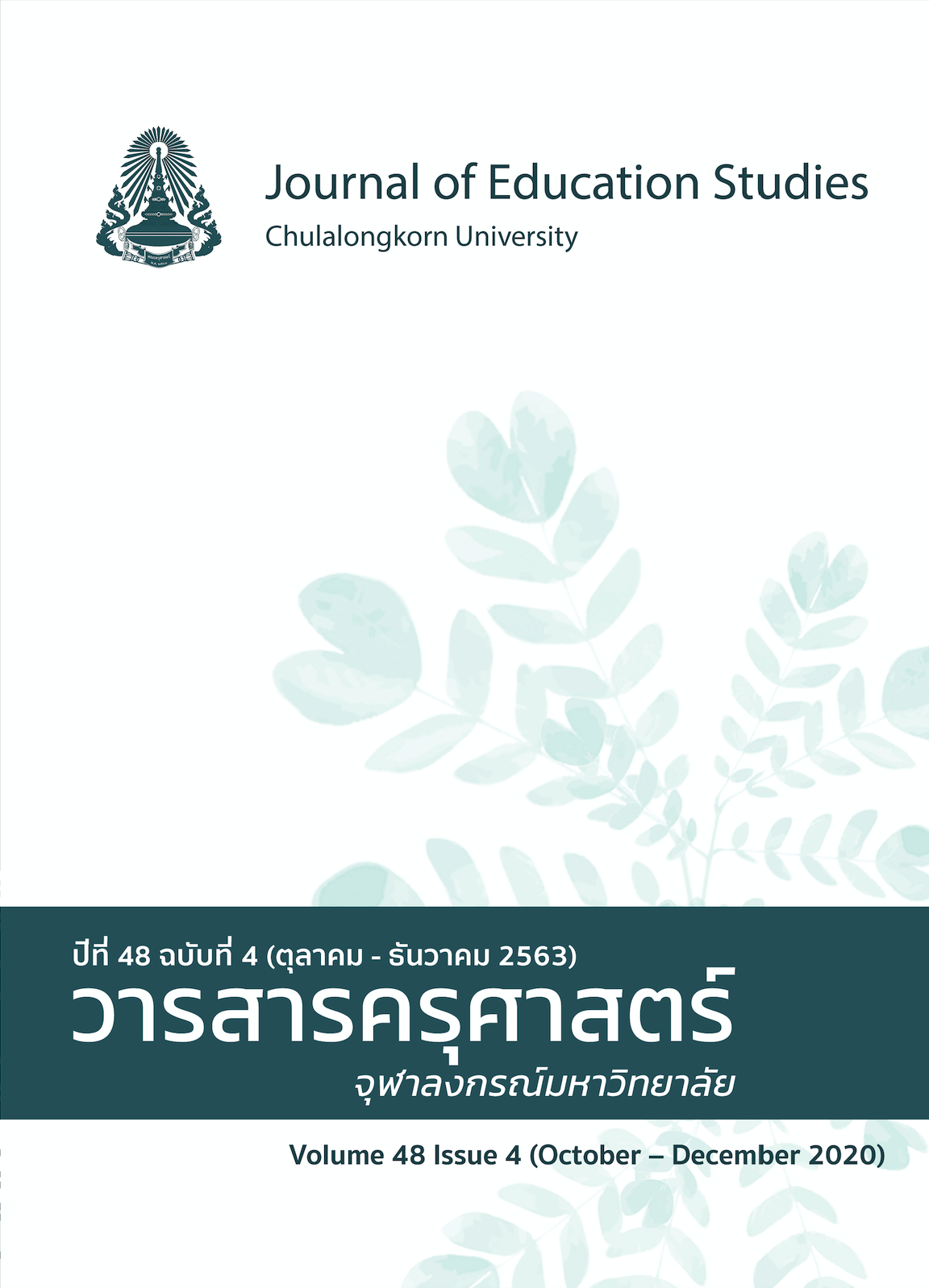Effective Use of Digital Outcrop Models in the Teaching of Field Methods in Geology
Keywords:
geology, spatial cognition, digital outcrop modelAbstract
Spatial visualization and object visualization are frequently used in geological fieldwork. However, geology classrooms usually use photographs, diagrams and maps as teaching media. Three-dimensional objects are represented by two-dimensional graphics in media, which does not promote the development of spatial visualization. As a result, students fail to match their pre-field mental imagery (i.e. distance, size, inclination of bedding) with the natural outcrop features. This study aimed to improve the spatial abilities of second-year students at the Department of Geology, Faculty of Science, Chulalongkorn University by creating a Digital Outcrop Model (DOM) of a limestone quarry in Saraburi Province. Thirty-two students were asked to estimate the absolute size of four boxes as well as apparent dips in a limestone bed using the DOM along with a static outcrop image from the same location. The results showed that the DOM increased the accuracy of size and angle estimations. These results suggest that DOMs could be useful for geology students to improve their spatial cognition in class before working in the field.
References
Bistacchi, A., Balsamo, F., Storti, F., Mozafari, M., Swennen, R., Solum, J., Tueckmantel, C., & Taberner, C. (2015). Photogrammetric digital outcrop reconstruction, visualization with textured surfaces, and three-dimensional structural analysis and modeling: Innovative methodologies applied to fault-related dolomitization (Vajont Limestone, Southern Alps, Italy). Geosphere, 11(6), 2031-2048. https://doi.org/10.1130/GES01005.1
Black, A. A. (2005). Spatial ability and earth science conceptual understanding. Journal of Geoscience Education, 53(4), 402-414. https://doi.org/10.5408/1089-9995-53.4.402
Blajenkova, O., Kozhevnikov, M., & Motes, M. A. (2006). Object-spatial imagery: A new self-report imagery questionnaire. Applied Cognitive Psychology, 20(2), 239-263. https://doi.org/10.1002/acp.1182
Blazhenkova, O., & Kozhevnikov, M. (2010). Visual-object ability: A new dimension of non-verbal intelligence. Cognition, 117(3), 276-301. https://doi.org/10.1016/j.cognition.2010.08.021
Chabris, C. F., Jerde, T. E., Woolley, A. W., Gerbasi, M. E., Schuldt, J. P., Bennett, S. L., Hackman, J. R., & Kosslyn, S. M. (2006). Spatial and object visualization cognitive styles: Validation studies in 3800 individuals (Research Report No.2). The Group Brain Project, Harvard University.
Hegarty, M., Montello, D. R., Richardson, A. E., Ishikawa, T., & Lovelace, K. (2006). Spatial abilities at different scales: Individual differences in aptitude-test performance and spatial-layout learning. Intelligence, 34(2), 151-176. https://doi.org/10.1016/j.intell.2005.09.005
Hodgetts, D. (2013). Laser scanning and digital outcrop geology in the petroleum industry: A review. Marine and Petroleum Geology, 46, 335-354. https://doi.org/10.1016/j.marpetgeo.2013.02.014
Johnson, C. L., Semple, I. L., & Creem-Regehr, S. H. (2013). The effects of scaling cues and interactivity on a viewer’s ability to estimate the size of features shown on outcrop imagery. Journal of Geoscience Education, 61(1), 68-80. https://doi.org/10.5408/12-329.1
Kastens, K. (2010). Commentary: Object and spatial visualization in geosciences. Journal of Geoscience Education, 58(2), 52-57. https://doi.org/10.5408/1.3534847
Kastens, K. A., & Ishikawa, T. (2006). Spatial thinking in the geosciences and cognitive sciences: A cross-disciplinary look at the intersection of the two fields. In Manduca, C. A., & Mogk, D. W. (Eds.), Earth and mind: How geologists think and learn about the earth: Geological society of America special paper 413 (pp. 53-76). https://doi.org/10.1130/2006.2413(05)
Kozhevnikov, M., Kosslyn, S., & Shephard, J. (2005). Spatial versus object visualizers: A new characterization of visual cognitive style. Memory & Cognition, 33(4), 710-726. https://doi.org/10.3758/BF03195337
Libarkin, J. C., & Brick, C. (2002). Research methodologies in science education: Visualization and the Geosciences. Journal of Geoscience Education, 50(4), 449-455. https://doi.org/10.5408/1089-9995-50.4.449
Orion, N., Ben-Chaim, D., & Kali, Y. (1997). Relationship between earth-science education and spatial visualization. Journal of Geoscience Education, 45(2), 129-132. https://doi.org/10.5408/1089-9995-45.2.129
Titus, S., & Horsman, E. (2009). Characterizing and improving spatial visualization skills. Journal of Geoscience Education, 57(4), 242-254. https://doi.org/10.5408/1.3559671
Ueno, K., & Charoentitirat, T. (2011). Carboniferous and Permian. In The geology of Thailand (pp. 71-136). Geological Society London. https://doi.org/10.1144/GOTH.5




